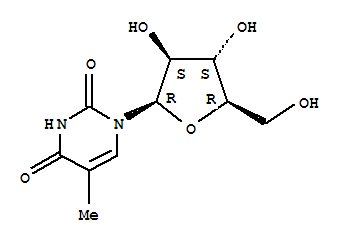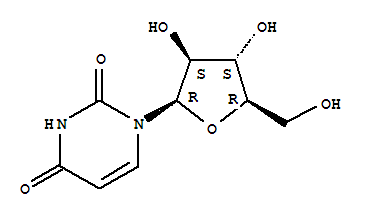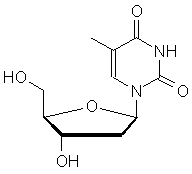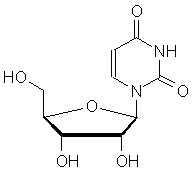Medicinal Uses
The Story:
In 1945, Werner Bergmann, an organic chemist studying the
shallow water sponges off the shore of Elliot Key, Florida,
stumbled across a peculiar unidentified sponge. It was not
until a few years later that Bergmann and his taxonomist
colleague, Dr. M. W. de Laubenfels, found more of this strange
new species. However, this time they named it, Cryptotethia
crypta, and took it back to the lab. At this point
Bergmann had been trying to isolate and study sterols,
derivatives of steroids, from marine organisms in his area.
When he finally got Cryptotethia crypta back to his
lab and boiled the body mass in liquid ether he noticed that a
large amount of some unidentifiable crystalline substance was
separated. Upon examination he noticed that the substance was
not characteristic of the sterols that he was looking for.
Instead, it exhibited
optic activity, as well as an ultraviolet
absorption spectrum that was very similar to the nucleotide, thymidine.
Thymidine is a combination of a pyrimidine nucleic base,
thymine, bonded to a dioxyribose, or a sugar group. In short,
this is a sequence found in DNA, and the compound that Bergmann
isolated was extremely similar to this molecule; because of
this, the “new” compound was named spongothymidine. Over the
next few years Bergmann continued studying this particular
Cryptotethia crypta extract and was able to isolate another
similar compound that exhibited characteristics of the uridine,
found in RNA. Similarly, it was named spongouridine. Today we
know the two compounds as 3-beta-D-arabofuranosylthymine and
3-beta-D-arabofuranosyluracil respectively.
This is where it gets juicy...
These two compounds were found to be even more interesting
because of their location in the Cryptotethia crypta
organism. Unlike their look-alike compounds found in DNA and
RNA, these isolated compounds were in a free-state in the
sponge. In other words they were not incorporated with any DNA
or RNA sequences and in fact seemed to inhibit DNA/RNA
replication. This led scientists to hypothesize that instead of
being the building blocks that construct all living things on
earth, they were used as a defense mechanism for
Cryptotethia crypta.
With this discovery, Seymour Cohen, another scientist
interested in sponges, drew the first parallels between the
simple sponge’s defense mechanism and the implement of the same
kind of treatment to human cancer patients. With his research
in the 1950’s, along with lab work with other researchers of the
time, a synthetic derivative of the spongothymidine found in
Cryptotethia crypta, arabinosyl cytosine (ara-C), was found
to successfully cure rats infected with cancer cells without
killing them. More work done by John Evans supporting these
results with the same ara-C compound showing successful
inhibition of leukemia cells.
Today, the same ara-C compound is popularly used in cancer
treatments. It is now constructed as a liposomal (surrounded by
a lipid, hydrophopic layer) drug know as Liposomal ara-C. The
drug is classified as a anti-metabolite, or a cell replication
inhibitor, and used in most all chemotherapy treatments.
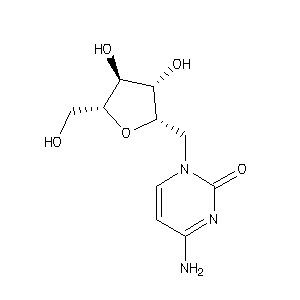
For more on this subject please visit,
A Tale
from Sea to Ara C.
Return Back to Top
View My References...
Contact Me...
